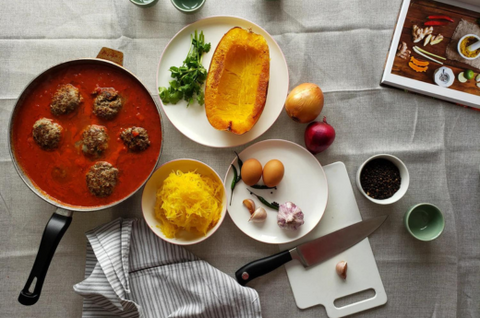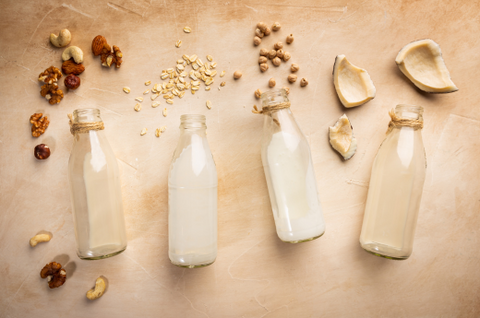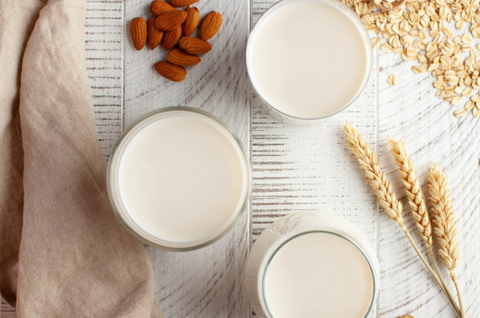Are you new to the gluten-free diet and feeling overwhelmed? You're not alone. Many people find themselves confused about where to start when transitioning to a gluten-free lifestyle, leaving them frustrated and struggling with meal planning. But don't worry - it doesn't have to be so daunting!
This beginner's guide aims at helping first-timers of the gluten-free diet get an understanding of what's involved from food choices to recipes, as well as tips for making this transition easier. With these helpful pointers and resources, anyone can make their journey towards better health smoother and more enjoyable.

What is a Gluten-Free Diet and Why do People Follow it
A gluten-free diet is a dietary approach that avoids the consumption of gluten, a protein found in wheat, barley, rye, and other grains. This type of diet is typically followed by people with celiac disease or non-celiac gluten sensitivity, as consuming gluten can result in various digestive issues and other health problems.
Celiac disease is an autoimmune disorder that causes damage to the small intestine when exposed to gluten. Non-celiac gluten sensitivity can cause similar symptoms as celiac disease but it is not as serious and does not cause damage to the small intestine. For these individuals, following a strict gluten-free diet may be helpful in relieving their symptoms. People with celiac disease may experience gut inflammation, bloating, diarrhea, and malnutrition when consuming gluten, while those with non-celiac gluten sensitivity experience similar symptoms, but without the gut inflammation.
Gluten-free diets have become increasingly popular in recent years, with many people eliminating gluten as a means of improving their overall health and wellness. However, it's important to consult with a healthcare professional before starting a gluten-free diet to ensure adequate nutrient intake, as well as rule out any underlying health conditions.

How to Identify Gluten in Foods
There are also certain gluten-free labeling standards that can help you identify if a product is safe for those with gluten sensitivities or intolerances. The Food and Drug Administration (FDA) requires that any food labeled as "gluten-free" must contain fewer than 20 parts per million of gluten. Additionally, the FDA allows products bearing the label "no gluten," "free of gluten," and "without gluten" to be labeled as such only if they do not contain any ingredients derived from wheat, rye, barley, or crossbreeds thereof. It's important to read labels carefully when shopping for foods that are marketed as being free of gluten.
For individuals with celiac disease or gluten intolerance, identifying gluten in foods can be a daunting task. Gluten is found in numerous foods, often as an additive or hidden ingredient, making it difficult to determine its presence. The best way to identify gluten in foods is to meticulously read ingredient labels and look for any of the following: wheat, barley, rye, malt, and brewer's yeast. However, it's important to note that gluten can also be found in unexpected items such as sauces, marinades, and even some medications.
Another helpful strategy is to avoid processed foods altogether and stick to whole, naturally gluten-free foods like fruits, vegetables, and lean meats. While the process of identifying gluten in foods may seem overwhelming, taking the time to carefully read labels and educate yourself can make all the difference in managing gluten intolerance.

Benefits of Going Gluten-Free
Gluten-free diets have been linked to many potential health benefits, including improved digestion, better nutrient absorption, and higher energy levels. Going gluten-free can help reduce inflammation throughout the body, support weight loss goals, and promote overall digestive health. Making the switch to gluten-free can be an easy way to make your food more nutritious by increasing your consumption of fresh fruits and vegetables and whole grains that are naturally free of wheat and other sources of gluten.
With the rise in popularity of gluten-free diets, it's easy to think it's just another fad. However, there are many legitimate benefits to cutting out gluten from your diet. For those with celiac disease, gluten can wreak havoc on their digestive system, causing painful inflammation and damage over time. But even for those without celiac disease, going gluten-free can clear up skin conditions, reduce inflammation throughout the body, and improve digestive function overall. It's important to remember that going gluten-free doesn't have to mean sacrificing taste or nutrition - there are plenty of delicious, whole-food options available to fuel your body without gluten.

Challenges of Following a Gluten-Free Diet
Following a gluten-free diet can be a significant challenge for those who have gluten intolerance or celiac disease. It requires a complete and permanent change in dietary habits, and the process can be daunting. Going gluten-free means eliminating all wheat, barley, and rye-containing products from your diet, which include many staples like bread, pasta, and baked goods. Even some seemingly safe food items like sauces and dressings may contain traces of gluten. It can be hard to know what food items are safe to eat and whether they have been cross-contaminated by trace amounts of gluten.
Maintaining a gluten-free diet requires not only a careful selection of food but also careful preparation methods and close attention to ingredient labels. Despite the challenges, it is essential to stick to a gluten-free diet to avoid the serious health consequences linked to gluten intolerance. With proper support and resources, it is possible to successfully navigate the challenges and develop a healthy, satisfying gluten-free lifestyle.

Shopping Tips for Going Gluten-Free
When it comes to shopping for gluten-free foods, it can be overwhelming and confusing. However, certain tips can make the process easier and more manageable. First and foremost, always read labels carefully and thoroughly to ensure that the product does not contain any gluten.
Gluten can be found in many foods, such as cereals and pastas, that may not appear to contain it at first glance. Many manufacturers also add wheat flour or other grain flours as a filler, so always make sure the item does not contain any of these before purchasing. Additionally, cross contamination is another potential source of gluten, so you should look for products that are specifically labeled “gluten-free” or certified by an organization like the Celiac Disease Foundation.
Fortunately, there are many ways to make following a gluten-free diet easier. Keeping a list of safe foods that you can eat will help ensure that you always have plenty of options available when meal planning. It is also important to read all labels carefully in order to identify any hidden sources of gluten.
Look for gluten-free certifications on the packaging or seek out brands that specialize in gluten-free options. It is also helpful to plan meals and make a list of the necessary ingredients to avoid impulse buys and accidental gluten consumption. Shopping at stores with dedicated gluten-free sections can also simplify the process. By following these tips, shopping for gluten-free foods can be a stress-free task.

Recipes Ideas For Delicious Meals Without Gluten
As the demand for gluten-free options continues to rise, there's no better time to explore the many delicious meals that can be made without this popular protein. By getting creative in the kitchen, you can create a range of flavorful, satisfying dishes that will leave your taste buds wanting more. From hearty soups and stews to lighter salads and stir-fries, there are endless gluten-free recipe ideas to suit every palate and occasion.
From classics like lasagna and shepherd's pie to healthier options such as quinoa salads and veggie-packed stir-fries, there is a gluten-free recipe for every mealtime. For breakfast, try buckwheat pancakes or a vegetable frittata with gluten-free bread. For lunch, experiment with bean burritos or creamy soups served with a fresh side salad. And for dinner, whip up some delicious stuffed bell peppers or Thai green curry – perfect served over brown rice or quinoa. With the right ingredients and cooking techniques, you can make dishes that are both nutritious and mouth wateringly good.
So whether you're cooking for yourself or a group, consider trying out some of these tasty and nutritious meal ideas that are sure to impress. With a little experimentation and a willingness to try new things, you'll soon discover just how delicious gluten-free eating can be.
Following a gluten-free diet has its challenges and restrictions, but it's also exciting as it opens up your palate to new and diverse recipes. With a few tips under your belt, switching over to a gluten-free diet can be an empowering journey that offers a variety of benefits. For example, those who follow a gluten-free diet have fewer GI symptoms, improved gut health, and need fewer medications for autoimmune diseases.
Therefore, whether you're exploring this type of lifestyle due to serious medical concerns or are just curious about what gluten-free encompasses and offers in terms of nourishment, do not hesitate to educate yourself more on the topic so you can make the best choice for your body! Remember that with commitment and research, you can learn how to successfully navigate the world of gluten-free ingredients and create amazing dishes that defy traditional nutrition expectations!
Frequently Asked Questions
What is a gluten-free diet?
A gluten-free diet is a diet that excludes gluten, which is a protein found in wheat, barley, rye, and some other grains. A gluten-free diet is essential for individuals with celiac disease, non-celiac gluten sensitivity, or wheat allergy, as consuming foods with gluten can cause severe health problems.
What is coeliac disease?
Coeliac disease, also known as celiac disease is a genetic autoimmune disorder that affects the small intestine when gluten is ingested. Gluten is a protein found in some grains such as wheat, barley, and rye. When people with celiac disease consume gluten, their immune system attacks their small intestine, damaging its lining and causing inflammation. This can lead to various symptoms such as abdominal pain, bloating, diarrhea, fatigue, and nutrient deficiencies. Celiac disease can be diagnosed through blood tests and an intestinal biopsy. The only treatment for celiac disease is a strict gluten-free diet for life, which helps to manage symptoms and prevent further damage to the small intestine.
What food has gluten?
Many common foods contain gluten, especially those made from wheat, barley, and rye. Some examples of foods that may contain gluten include:
- Bread and baked goods (e.g. cake, cookies, muffins)
- Pasta and noodles
- Cereals and breakfast foods (e.g. oatmeal, granola, muesli)
- Beer and malt beverages
- Soups and sauces made with wheat-based thickeners
- Processed meats (e.g. sausages, cold cuts) that contain fillers or binders made from wheat, rye, or barley
- Some beverages such as malted drinks and some types of chocolate drinks
- Snack foods, such as crackers and pretzels, may contain gluten as well.







Comments (2)
Glad to see that Hummus Fit offers gluten free meals. I ordered most of them to initially try as I am a newly identified Celiac and a bodybuilder that follows macros strictly. So far, I enjoyed all but one the meals that I have tried.
Please fix your Gluten Free filter! I called and reported that meals with gluten are shown when GF is selected. I just checked and the error still occurs, such as Al Pastor Tacos
Please add some GF pasta and muffin options.
Will you be offering gluten free items anytime soon?